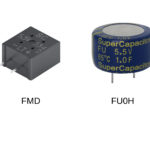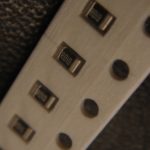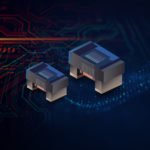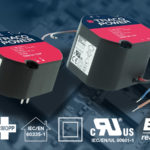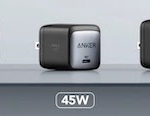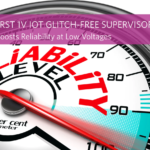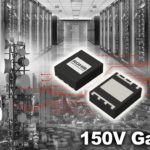The new MAX77659 single-inductor multiple-output (SIMO) power management IC (PMIC) with integrated switch-mode buck-boost charger from Analog Devices, Inc. charges wearables, hearables, and Internet of Things (IoT) devices faster and in less space than any other PMIC available today. The MAX77659 SIMO PMIC delivers over four hours of playtime after a short, ten-minute charge, and […]
IoT
Miniature supercapacitors qualified for automotive uses
KEMET announces its new high-performance supercapacitors for automotive electronics, the FMD, and the FU0H series. This series delivers 1,000 hours at 85°C/85% RH-rated voltage and operating temperature ranging from -40°C to 85°C. The FMD series offers the highest lifetime with up to 4,000 hours. These supercapacitors are qualified for an automotive testing protocol. These capacitors […]
All-metal current-sense chip resistors feature 1-W power rating
IoT and Robotics require high efficiency and small size to maximize functionality. For current sensing, this means high power in small case sizes and low resistance values. The CSSH0805 from Stackpole is an all-metal chip resistor with a 1W power rating, resistance values down to 0.5 milliohms, and TCR ranging from 50 ppm to 100 […]
Wirewound chip inductors feature low dc resistance, high Q values
Bourns, Inc. announced the CWF1610 and CWF2414 Chip Inductor Series. These inductors employ wire-wound construction on a ferrite core to offer high values of inductance, Q values, and self-resonant frequency, plus low DC resistance in a compact size with an operating temperature range of -40 to +125 °C. These features make this series ideal for RF signal processing, resonant […]
IP68-rated 24/36-W ac/dc supplies sport multiple mounting options
TRACO POWER announces their new TMW series of 24 & 36-watt power supplies that are IP68 rated and fully encapsulated with flexible options for PCB or chassis mounting for medical and industrial markets. The TMW Series were also designed for flush box-mounting to support IoT and home/building automation markets. All models are supported by a […]
ZVS flyback supplies enable ultra-compact chargers for phones, tablets, laptops
Power Integrations’ new InnoSwitch4-CZ IC is a high-frequency, zero voltage switching (ZVS) flyback switcher which enables a new class of ultra-compact chargers for phones, tablets, and laptops up to 110 W. Anker, the global charging expert for mobile devices, has incorporated the InnoSwitch4-CZ in its new Nano II series of USB PD chargers. With the […]
Glitch-free power supervisor IC protects low-voltage IoT apps
Designers can now enhance system reliability in low-voltage IoT applications with the Essential Analog MAX16162 nanoPower supervisor with glitch-free power-up from Maxim Integrated Products, Inc. This supervisor IC is the industry’s first to fully assert a system reset through the entire system power supply ramp; thereby eliminating low-voltage glitches during power-up and delivering higher system reliability. […]
2.5 V to 5.5 V, 3A reversible buck/boost regulator measures just 218mm2
System architects seeking backup power using supercapacitor or other energy sources can now deliver the best combination of highest efficiency and smallest size with the Continua MAX38889 2.5V-to-5.5V, 3A reversible buck/boost regulator from Maxim Integrated Products, Inc. The latest addition to Maxim’s Continua family of backup regulators delivers the industry’s tightest output regulation of 2.5 […]
Reversible 3-A buck/boost regulator covers 2.5 – 5.5 V
System architects seeking backup power using supercapacitor or other energy sources can now deliver the best combination of highest efficiency and smallest size with the Continua MAX38889 2.5V-to-5.5V, 3A reversible buck/boost regulator from Maxim Integrated Products, Inc. The latest addition to Maxim’s Continua family of backup regulators delivers the industry’s tightest output regulation of 2.5 […]
GaN HEMT devices boast high gate breakdown voltage
ROHM Semiconductor announced it has developed the industry’s highest (8V) gate breakdown voltage (rated gate-source voltage) technology for 150V GaN HEMT devices – optimized for power supply circuits in industrial and communication equipment. In recent years, due to the rising demand for server systems in response to the growing number of IoT devices, improving power conversion […]


